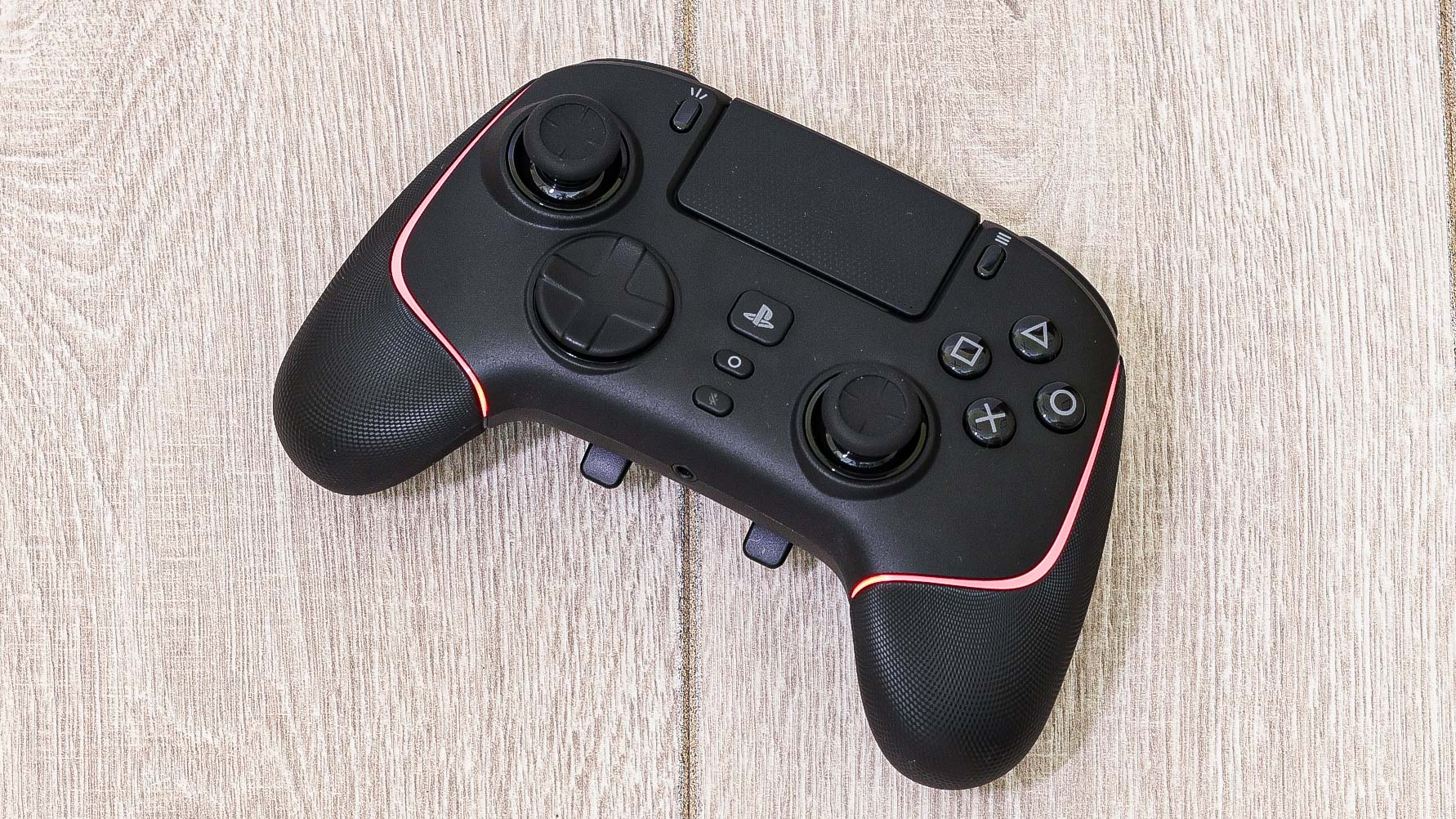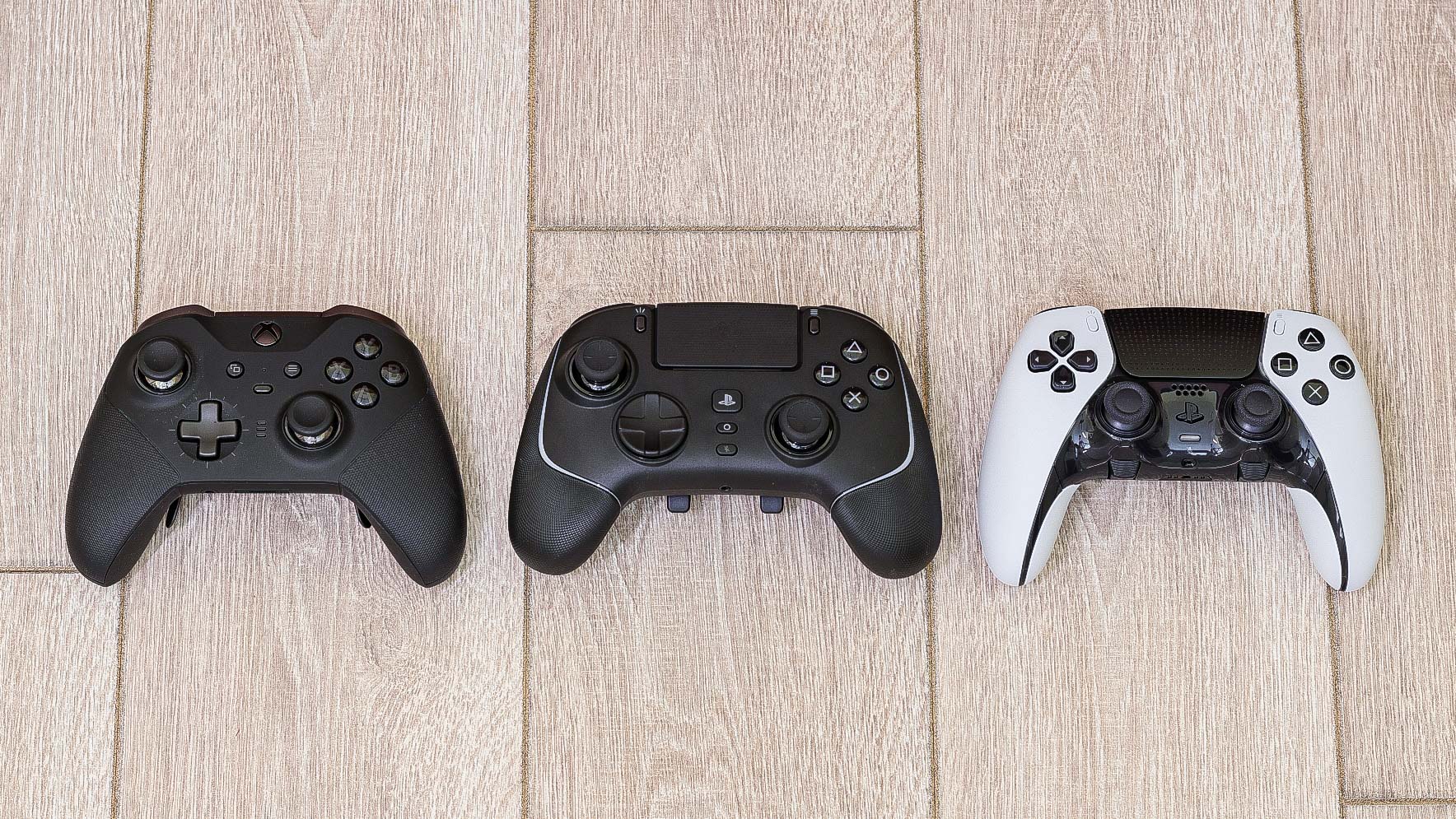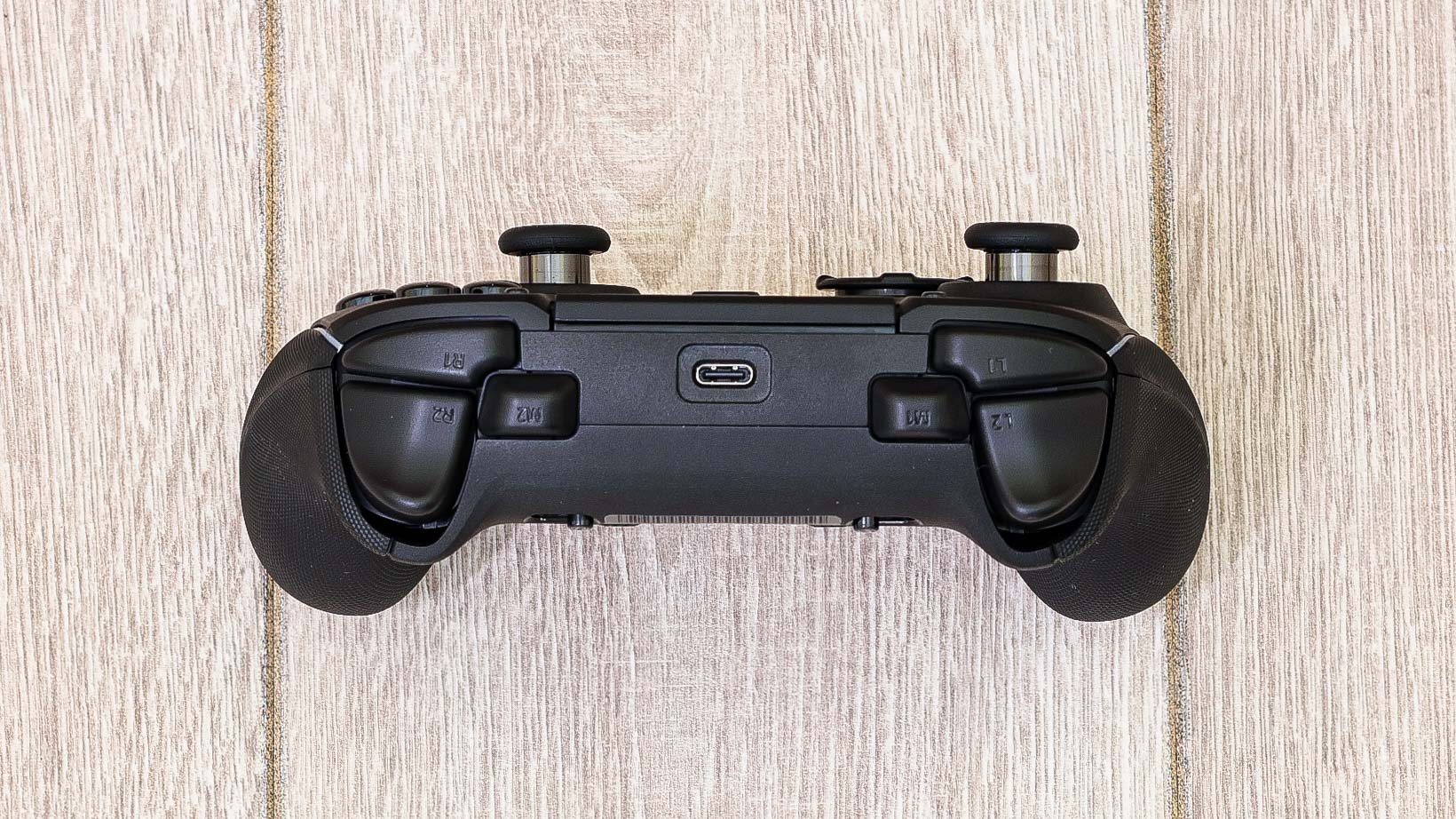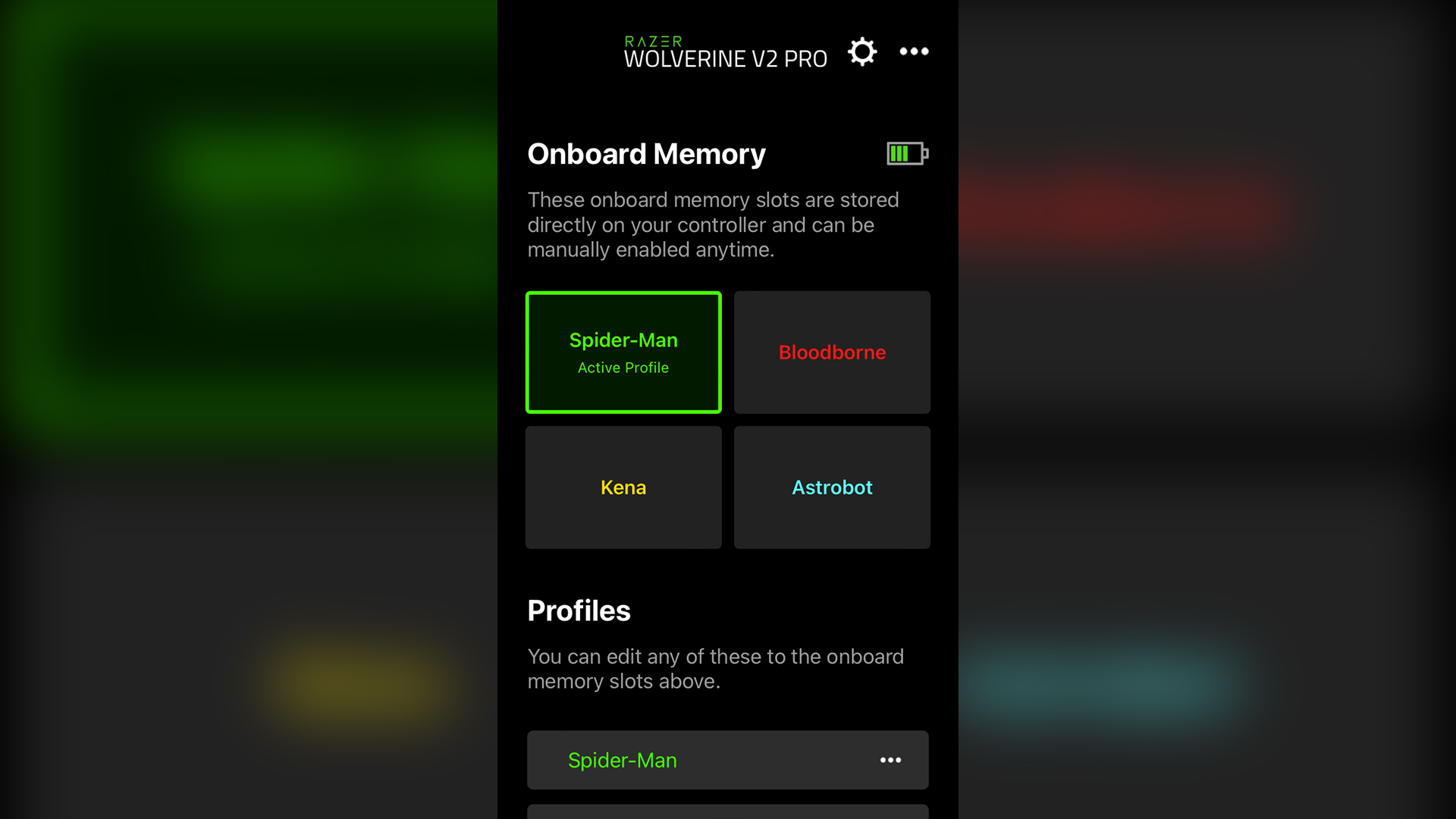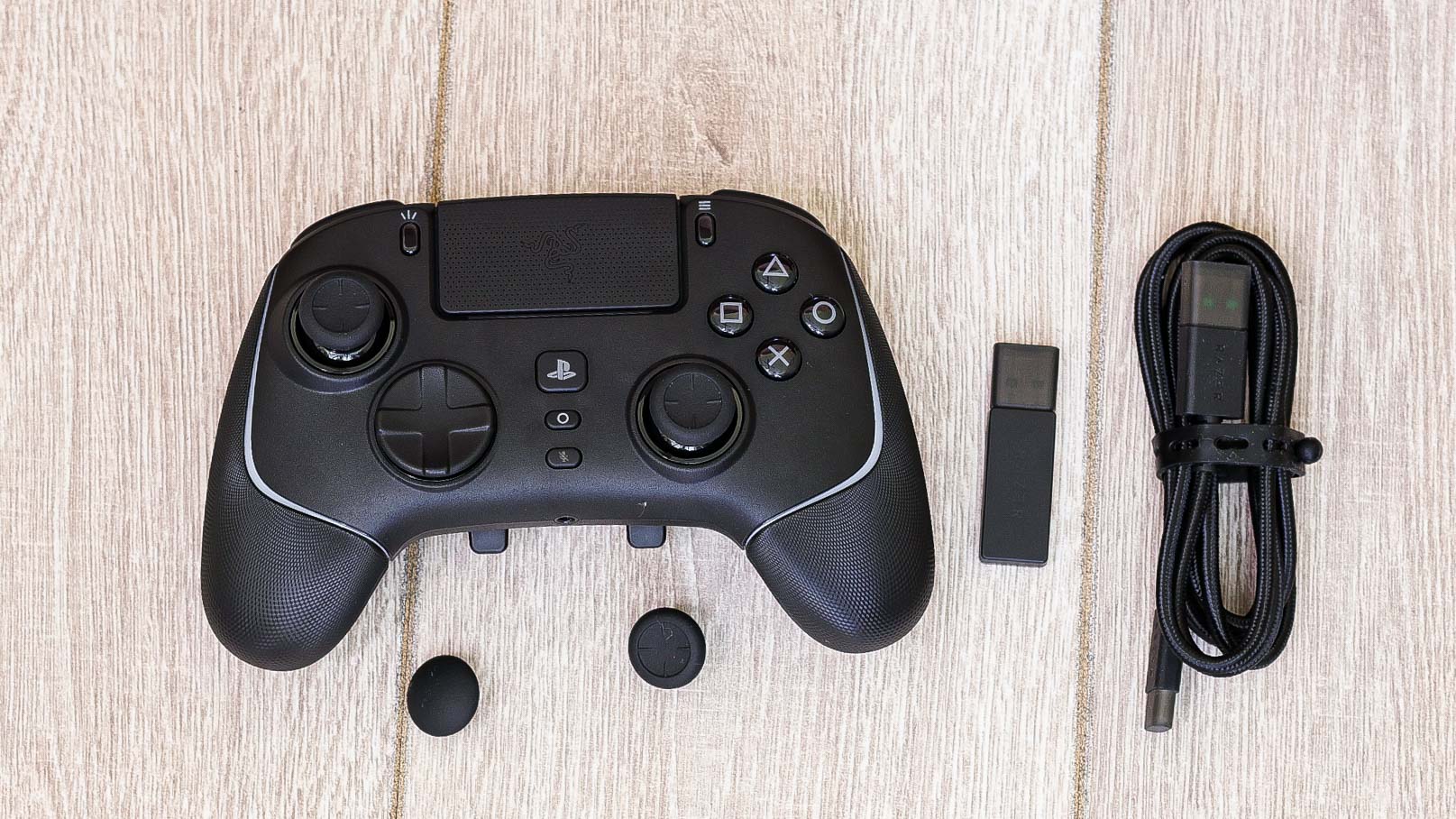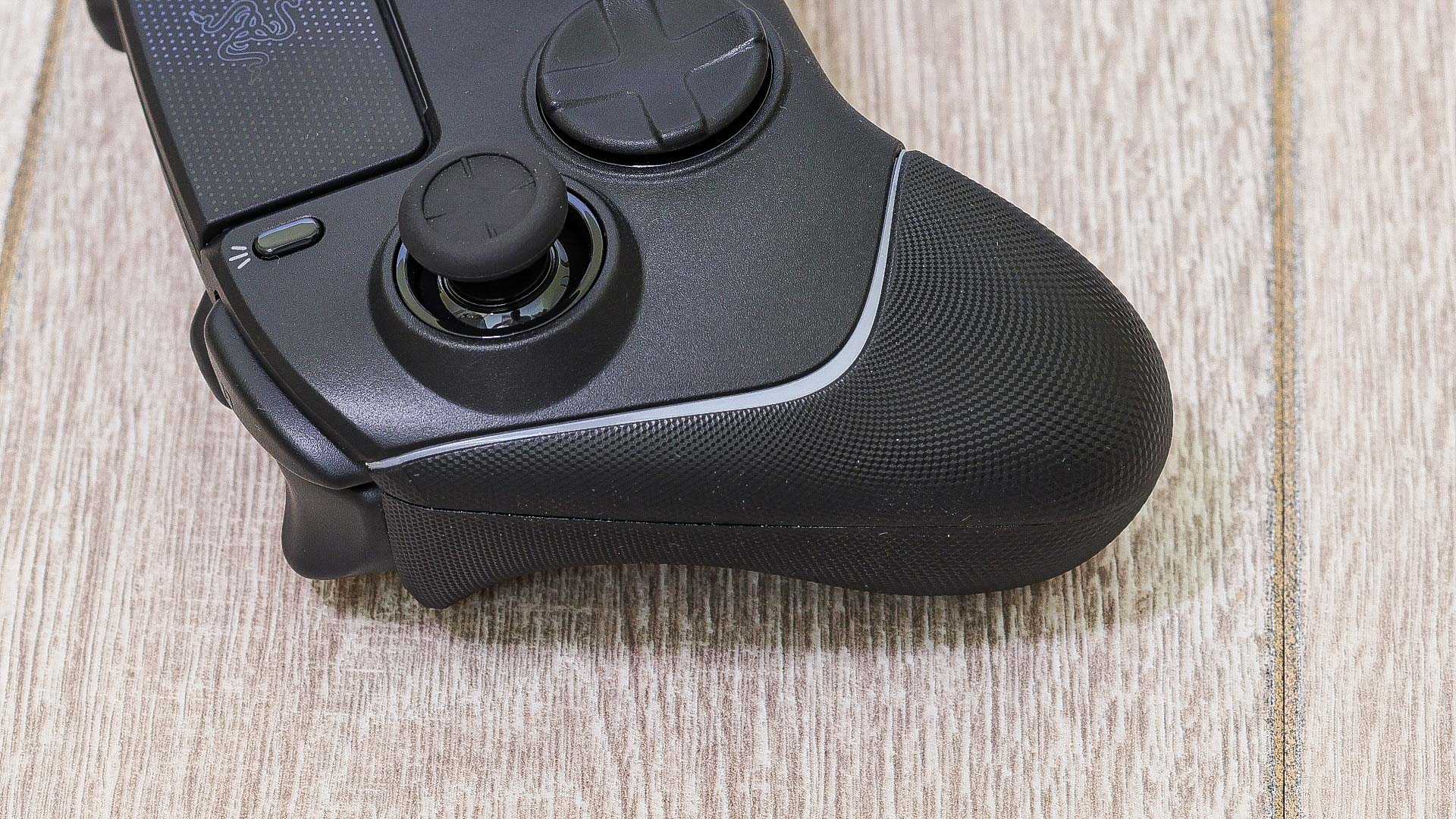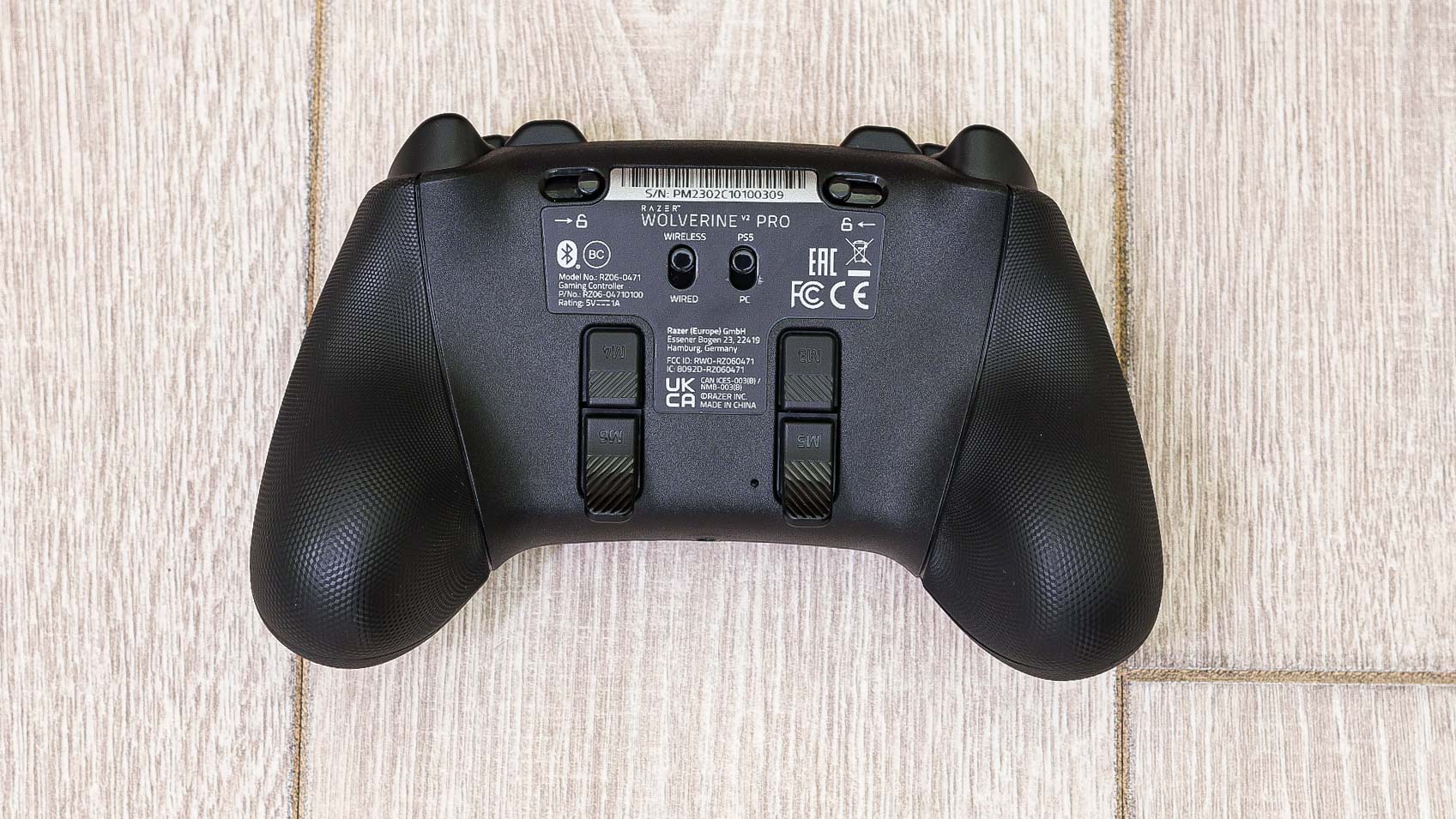Tom's Guide Verdict
The Wolverine V2 Pro is far more expensive than competing pro controllers, while including fewer accessories and ditching any kind of rumble or haptic features.
Pros
- +
Six programmable buttons
- +
Excellent d-pad and trigger stops
- +
Compatibility with PS5 and PC
- +
Good grip texture
- +
Good battery life
Cons
- -
Expensive
- -
No haptics, Adaptive Triggers, speaker, or mic
- -
Few included accessories, no carry case
- -
Awkward back button placement
- -
Won't power on PS5
Why you can trust Tom's Guide
It's been a long time since Razer released a PlayStation compatible controller. Their Wolverine line has been Xbox-only for years, but the new Wolverine V2 Pro is officially licensed by Sony for the PlayStation 5. Comparisons to Sony's DualSense Edge are unavoidable.
Razer's MSRP of $249.99 is quite pricey at $50 more than the Edge. But with more programmable buttons, does this pad deserve its asking price? As you can probably tell from the review score, the answer is a “no.” But let’s go into some more detail.
Razer Wolverine V2 Pro: Design
Design is a subjective thing, so how the Wolverine V2 Pro feels to you depends on the shape of your hands. It weighs in at 9.8 ounces, notably lighter than the 11.8 ounces of the DualSense Edge, and expected due to the lack of haptic motors. The overall shape is a mix of Xbox and PlayStation controllers.
The face is quite tall and the palm grips are somewhat short and stubby, like an Xbox controller. However the grips make a steeper angle with the face, like the older DualShock 4 controller. For my hands, I prefer the longer grips on the DualShock 4 and DualSense as they give added purchase for my ring fingers and pinkies in holding the controller. Your preferences of course may differ.
The grip panels have a much more aggressive texture to them. The material is much firmer than softer rubber material like on the Elite or Edge controllers, but it's not unpleasant. The thumbsticks feel smooth and taught. Apart from the different layout geometry you'd be hard pressed to tell the difference between the V2, Edge, and Elite in this regard.
Meanwhile, the shoulder buttons are long and slender while the trigger shoes have a sharper curve, displaying the Xbox heritage of the Wolverine body. The more pronounced hooks on the trigger ends force your fingers to ride higher and closer to the hinge. The V2 Pro's triggers already have shorter throws than the DualSense, so this higher finger position exaggerates that and limits the usable granularity. Using the triggers with the locks engaged makes them very quick and responsive in games where you don't need the full range of motion.
You may notice that the new Wolverine V2 Pro is almost identical to the Wolverine V2 Chroma for Xbox — packing six total programmable buttons are available. Four of these M buttons are on the back, and two more are up top between the shoulder buttons and triggers.
Get instant access to breaking news, the hottest reviews, great deals and helpful tips.
The four back buttons are fixed, unfortunately, and can't be removed or swapped with different paddles. It also shares the offset thumbstick layout of the older Xbox version. That alone may be a deal breaker for PlayStation’s symmetrical purists. The thumbstick stems can be switched with different caps that are included in the box, and the d-pad is a ring instead of segmented cross.
You will still find the four main face buttons, central touchpad, and other PlayStation-only controls. If you want to give your gaming a little more visual panache, RGB lighting comes from two stripes separating the faceplate from the grips, like a cheetah's tear streak.
Apart from the thumbstick layout, the rather clicky buttons are another thing you notice when picking up the V2 Pro, which use Mecha-Tactile switches. These give the buttons a distinct click, both audible and tactile, which is quite different from Sony's own controllers, or nearly any other controller for that matter. Razer claims these switches require shorter travel, and can therefore be activated more quickly. However, you’d be hard pushed to notice the difference — I saw no improvement in narrower timing windows like parries in Bloodborne or Kena: Bridge of Spirits.
These switches are used for everything except for the back buttons, and that impressively includes the d-pad, which uses eight individual switches for the cardinal up, down, left, and right as well as the four corner positions. The L2 and R2 triggers have trigger stops that are either on or off with no middle position. When on, the trigger throw is very short — far shorter than either the DualSense Edge or Xbox Elite 2, and use the same clicky switch as the rest of the buttons for actuation.
However, the V2 Pro lacks quite a few features of the DualSense and Edge. Most notably, the V2 Pro has no haptics or adaptive triggers. On top of that, you won’t find an integrated microphone or speaker here either. The V2 Pro still has a mic mute button, but that's solely for the 4-pole 3.5mm jack on the bottom of the controller. The circle marked button just above the mic mute button is used much like the Fn button on the Edge, allowing you to swap button profiles and adjust headset volume.
The Wolverine V2 Pro is available in all black or white with black handle grips — offering compatibility with both PlayStation 5 and Windows PC, either wired or over wireless USB dongle connections.
Razer Wolverine V2 Pro: Customization
To customize the Wolverine, you must use the Razer Controller application on a mobile iOS or Android device. There is no customization software for PC, which means you don't need a computer to change the controller settings.
Understandably, those using the V2 Pro primarily for PC gaming might find it frustrating to use their phone to change controller settings rather than the computer they're already sitting at. But it does bring benefits too, such as being able to tweak your button profile while staying on the couch or if you're playing at a friend's house.
Connect the controller to the app over bluetooth, and you’re off to the races (the controller must be turned on in the PC wireless mode, which the instructions don't tell you). From there you can create up to four profiles, each assigned a different color. You can cycle the active profile from the controller by holding the button just above the mic mute and pressing the d-pad left and right buttons, or you can use the companion app.
When changing the active profile, a light of the corresponding color will blink on the controller's face. Each profile also has its own corresponding RGB lighting configurations, but options are limited to a static single color, two color pulsing, full spectrum cycling, or just disabled entirely.
When creating a profile, the six programmable M buttons can be mapped to any of the four face buttons, L1, L2, L3, R1, R2, R3, the Options and Share/Create buttons, or the d-pad directions. Alternatively, an M button can be mapped to a change of thumbstick sensitivity. Unlike the DualSense Edge, however, the V2 Pro doesn't allow changes to thumbstick default sensitivity or response curves.
Instead, Razer has a feature called Sensitivity Clutch that lowers thumbstick sensitivity when an assigned button is held down, and then returns it to normal when the button is released. This comes in especially useful in shooters, where you can slow down your movements while aiming down the sights, then go back to normal camera control.
On top of that, You can set one M button to activate Clutch mode for both thumbsticks, or even have each stick with their own Clutch button. Each stick also has its own slider control of how much slower they respond when Sensitivity Clutch is active. However, Sensitivity Clutch is strictly a linear adjustment. You can't change the sticks' dead zones or make them more reactive around the outer limits of their movements.
Though the DualSense Edge technically matches the V2 Pro with holding four active profiles, one profile on the Edge must be the default controller profile, which means it really only has three at a given time. Conversely, the Edge allows you to create and store many profiles on the PS5, swapping them out to the active slots as needed.
You can't store any profiles on your phone or tablet for the Wolverine — all its profiles are stored on the controller itself. This is great for portability, as the same profile can be used on any PlayStation or PC you game on. But it also means you cannot create more than four profiles.
Razer Wolverine V2 Pro: Included accessories
Despite the steep price, the V2 Pro doesn't come with much in the box. Apart from the controller and USB dongle, the only items in the box are a 1.4m USB cable, a convex thumbstick, and an extra long concave thumbstick. Including only two additional thumbstick caps when both Sony and Microsoft have four seems rather stingy.
Plus the included cable is far too short to use in a TV room. It's sufficient for use at a desk for PC gaming, but otherwise it's only for charging the controller. Finally, the lack of storage case for the controller and the extra parts seems almost insulting.
Razer Wolverine V2 Pro: Gaming performance
One great aspect of the V2 Pro during gameplay is the d-pad. The slightly bowled shape retains your thumb beautifully, even when using aggressive motions. The eight switches do a great job of relaying your commands without false inputs. For older-style platformers, it's perfect. The Mecha-Tactile switches on the rest of the buttons will likely be a love/hate thing. The difference in feel takes a little getting used to, but the extra clicking noise can be very annoying.
Then we turn our attention to the triggers, which are quite pronounced and jut out from the controller body. This guards against accidental L2 and R2 button presses when setting the controller down, which can be an issue on the DualSense.
However, these also protrude enough where they rub on the knuckle of your middle finger, depending on the size of your hands. This sentiment extends to a lot of the external shape. The controller isn't uncomfortable for gaming by any means, but it certainly doesn't feel sculpted to match your hands, like you forget you're holding it.
But here’s the make-or-break question: how well do those six M buttons handle? Again, comfort and ergonomics can be subjective, but it's safe to say the V2 Pro could do much better in this regard. The M1 and M2 button, on the top with the shoulder buttons and triggers, are great.
They're located right under your fingertips and don't feel like they're getting in the way of the other four controls up there. It can take some time to retrain your index fingers to handle three buttons instead of two, but the same goes for using back buttons for anyone who hasn't used a pro controller before.
However, the back buttons aren’t nearly as user-friendly, as they are lined up in columns closer to the center of the controller rather than along the junction between the backplate and grip panels.
The M3 and M4 buttons on the top are boxy in shape while the lower M5 and M6 buttons have longer tails curving out from the controller. Your fingertips don't naturally rest on the buttons, and it almost feels as if you have to consciously reach for them.
Perhaps Razer intentionally designed the buttons to be farther away to prevent accidental presses (anyone that's used the back paddles on the Edge and Elite controllers knows how easy it is to accidentally squeeze those during tense boss battles). But it's not something that feels intuitive.
Razer Wolverine V2 Pro: Battery
Razer claims the V2 Pro battery can last up to 28 hours with Chroma RGB lighting turned off. With RGB lighting turned on, that estimate is slashed by two-thirds to only 10 hours.
Testing here shows those estimates to be fairly accurate. Perhaps more importantly, the V2 Pro's play time lasts significantly longer than the often criticized stamina of the DualSense and Edge.
Razer Wolverine V2 Pro: Verdict
The Razer Wolverine V2 Pro’s price is its ultimate downfall. You can’t expect people to pay $50 more than the DualSense Edge for something that lacks many accessories that come with Sony’s own controller.
The thumbsticks are not user replaceable, it has half as many thumbstick cap options, and no storage case. The included cable is useless for playing in a TV room, but that may be a non-issue given the longer battery life. However it does require one of the PS5's USB ports, likely using the single type-A port on the front.
Then there's the lack of PlayStation-centric features, like Adaptive Triggers, a controller speaker, or mic. The last two are small matters, and the V2 Pro may get a pass on the triggers depending on how you feel about them. But to go so far as to leave out all haptic and rumble feedback seems a bit extreme from a design perspective.
On top of that, it is quite annoying that this controller will not turn on the PS5 — given it is a Sony-licensed pad. Instead you need to use either another controller, the power button on the console itself, or HDMI command forwarding in your TV setup.
Not that the V2 Pro is devoid of redeeming characteristics. The d-pad is fantastic and the triggers in short throw mode are excellent. Having two programmable buttons by the triggers is also very handy. But the back buttons are on the wrong side of awkward. Overall handling just doesn't feel as refined or polished as the competition — especially when you’re expected to pay a premium for it.
Eric started gaming young in life, crashing MS Flight Simulator planes at the age of three on a suped-up PCjr in the Microsoft test labs. Much of high school was spent in the computer labs, building computers from spare parts, writing programs on his TI calculator to do his physics and calculus homework, and helping the business teacher run multiplayer StarCraft games on the school network. Eric has over 15 years’ experience in databases, programming, quality assurance, and testing methodology. He has reviewed tech and computer hardware since 2015 for Tom’s Hardware and other outlets.

